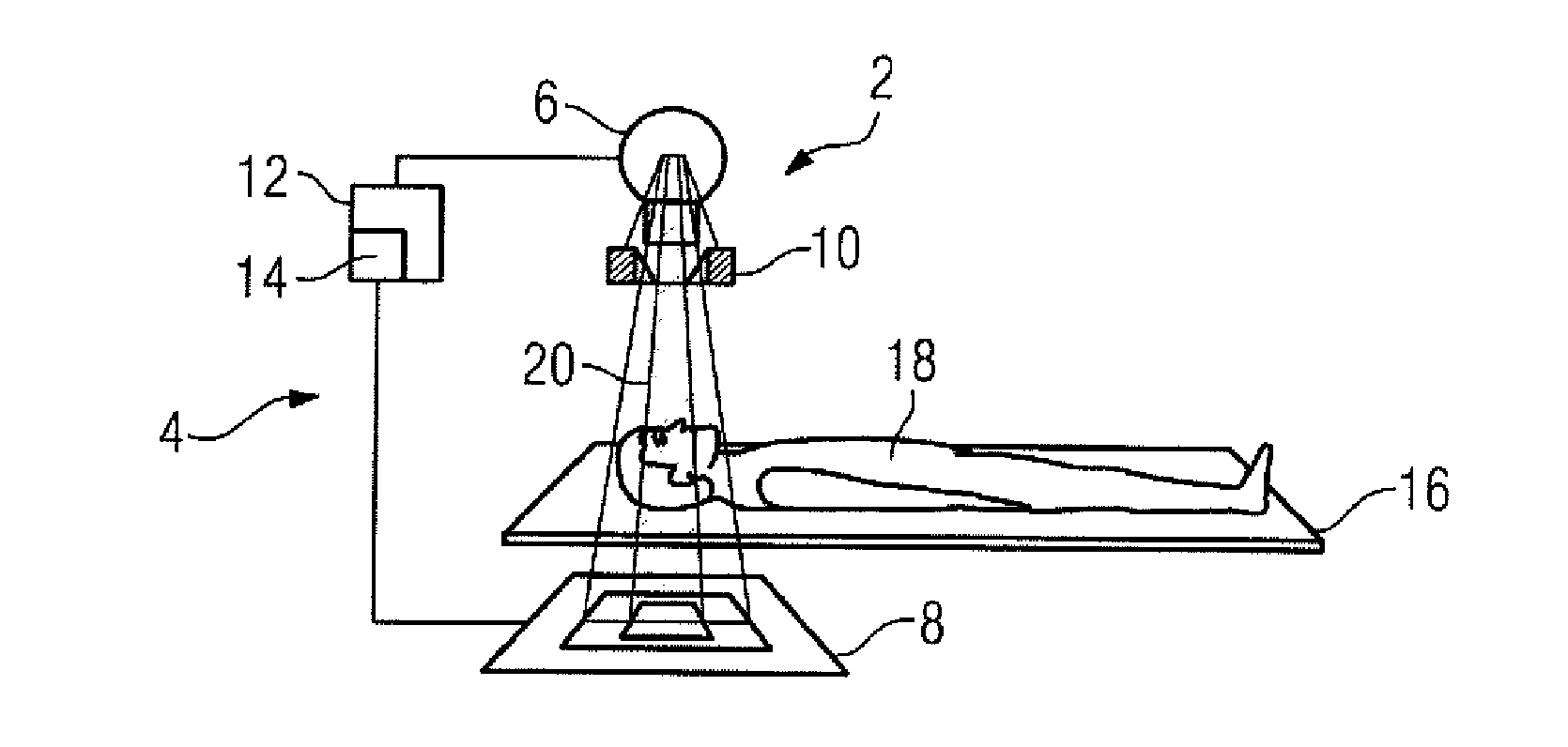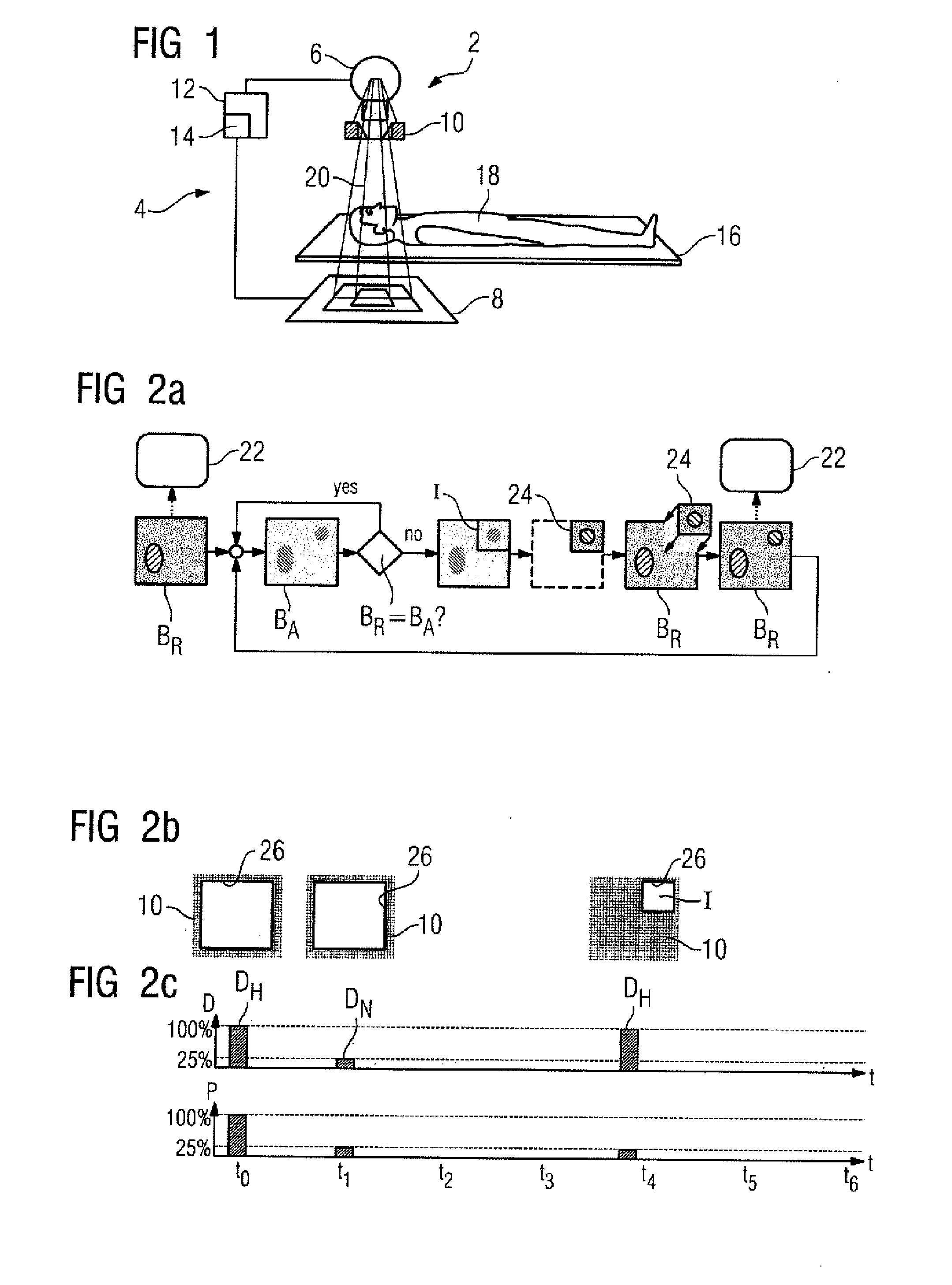Imaging System
a technology of imaging system and image, applied in the field of imaging system, can solve the problems of radiation damage, skin and other tissue damage reddening, radiation dose reduction, etc., and achieve the effect of high image quality
- Summary
- Abstract
- Description
- Claims
- Application Information
AI Technical Summary
Benefits of technology
Problems solved by technology
Method used
Image
Examples
Embodiment Construction
[0027]In one embodiment, as shown in FIG. 1, an imaging apparatus 2 includes an imaging device 4 with a radiation source 6, a radiation detector 8, and a collimator 10. The imaging device 4 may be an x-ray machine. The apparatus 2 may be controlled by a control unit 12 that includes a processing unit 14. A patient 18 positioned on a patient positioning table 16 may be moved into a beam path 20 emitted by a radiation source 6. A series of recordings of a region under examination of the patient 18 may be made using the imaging device 4. An image sequence may be recorded during a medical intervention with continuous irradiation of the patient 18.
[0028]A method for capturing an image sequence is shown in the block diagram of FIG. 2a. A reference image BR with high image sharpness is taken with a high radiation dose DH (see FIG. 2c). The reference image BR may be stored and / or displayed on a display 22. The display 22 provides the treating physician with visual assistance during the medi...
PUM
| Property | Measurement | Unit |
|---|---|---|
| imaging method | aaaaa | aaaaa |
| threshold | aaaaa | aaaaa |
| time | aaaaa | aaaaa |
Abstract
Description
Claims
Application Information
 Login to View More
Login to View More - R&D
- Intellectual Property
- Life Sciences
- Materials
- Tech Scout
- Unparalleled Data Quality
- Higher Quality Content
- 60% Fewer Hallucinations
Browse by: Latest US Patents, China's latest patents, Technical Efficacy Thesaurus, Application Domain, Technology Topic, Popular Technical Reports.
© 2025 PatSnap. All rights reserved.Legal|Privacy policy|Modern Slavery Act Transparency Statement|Sitemap|About US| Contact US: help@patsnap.com


